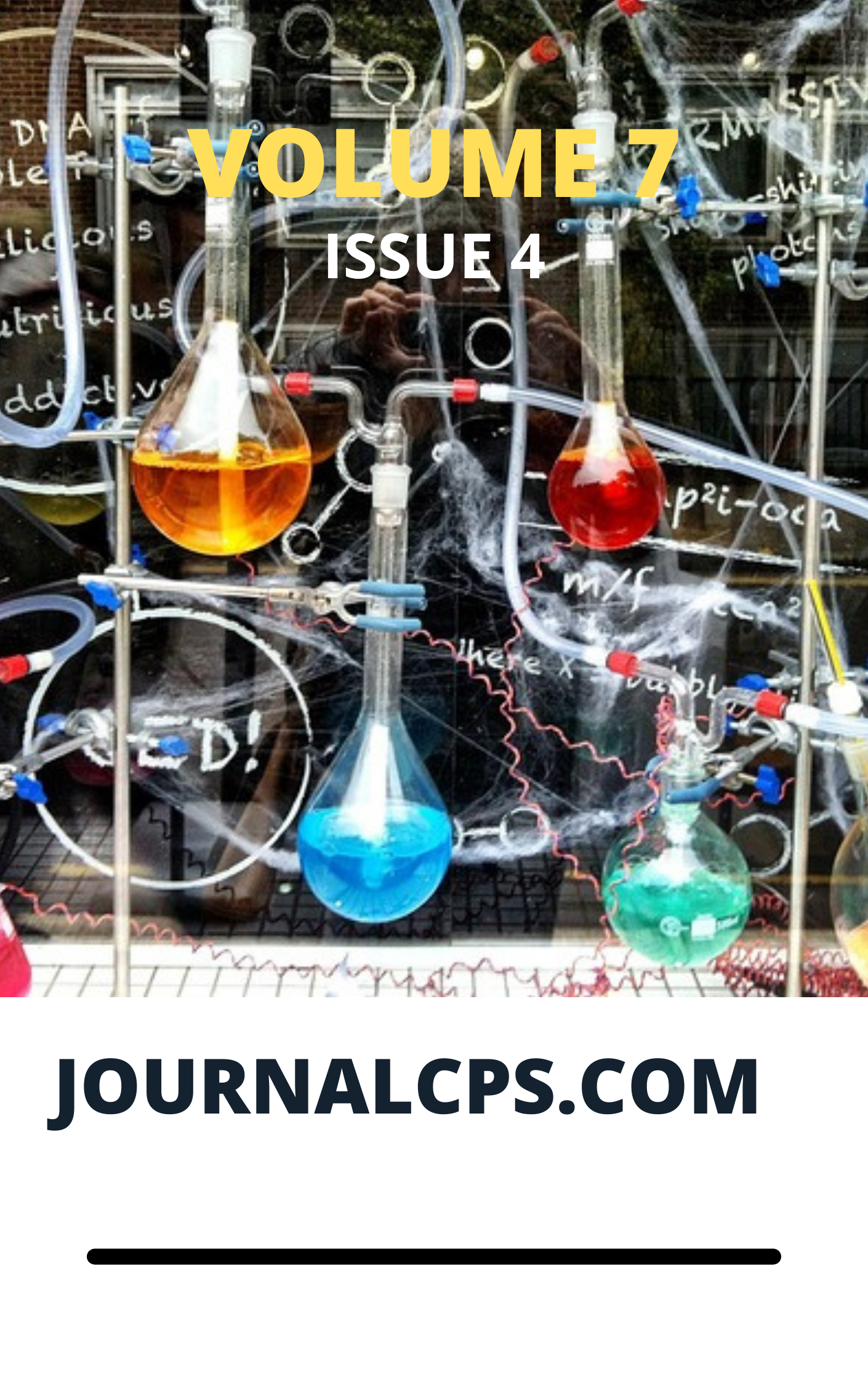Application of Moringa oleifera as a Natural Coagulant for the Treatment of wastewater from Bakery and Brewery Industries in Uyo, Akwa Ibom State, Nigeria
Keywords:
Brewery, bakery, wastewater, bacteriological and physicochemical analysis, treatment, Moringa oleiferaAbstract
Itoro U. Okon., Eteyen A.Uko., Aniebiet M. Essien, Rachel S. Okon. and H. H. Oronubong
The use of Moringa oleifera as a natural coagulant for the treatment of bakery and brewery industrial wastewater was carried out using microbiological, phytochemical and physicochemical methods. The mean bacterial count obtained from the brewery wastewater ranged from 4.1 x 105 to 5.3 x 105 cfu/ml, The mean coliform count ranged from 2.2 x 104 to 3.1 x 104cfu/ml, while the mean fungal count ranged from 3.9 x 104 to 4.1 x 104cfu/ml Wastewater from the bakery had a mean bacterial count that ranged from3.9 x 105 to 4.2 x 105cfu/ml and the coliform count which ranged from 3.8 x104 to 6.3 x 104cfu/ml. There was a significant different (P > 0.05) between the microbial counts of the wastewater samples from the two sources. The mean bacterial count for brewery wastewater pre-treated with charcoal ranged from 3.0 x 105 to 3.9x105cfu/ml, mean coliform count ranged from 2.0 x 105 to 2.9 x 104cfu/ml, and mean fungal count ranged from 3.8 x 104 to 3.9 x 104 cfu/ml. The mean bacterial, coliform count and fungal counts of the bakery wastewater after pre-treatment with charcoal were within the following range, wastewater 3.7 x 105 to 4.0 x 105cfu/ml, 3.6 x 105 and 6.0 x105cfu/ml, and 3.0 x105 and 3.2 x 105cfu/ml. The microbial isolates obtained from the brewery, bakery, charcoal filtered brewery, and bakery wastewater occurrence were; Bacillus sp, Enterobacter sp, Staphylococcus aureus, Proteus sp, Aspergillus sp, and Fusarium sp, Lactobacillus sp, Pseudomonas sp, Penicillium sp, Staphylococcus aureus 3(8.3%), Staphylococcus sp, Saccharomyces sp, and Rhizopus sp. Results obtained from physicochemical analysis showed values for Physiochemical analyses showed : COD (0.38 ± 0.01 mg/L), (22.30 ± 0.11 °C), turbidity( 843 ± 0.20 NTU), DO (4.49 ± 0.01 mg/L), BOD (0.29 ± 0.01 mg/L) and pH (4.68 ± 0.10) for bakery wastewater, while the corresponding values for wastewater from the brewery industry were 0.23 ± 0.02 mg/L, 8.01 ± 0.08 °C, 10.13 ± 0.03 NTU, 2.40 ± 0.01 mg/L, 0.13 ± 0.03 mg/L and 5.83 ± 0.30 respectively. Phytochemical analysis revealed the presence of saponins, cardiac glycoside, .flavonoids, tannins, alkaloids, terpenes, and tannins. Terpenes were present in the seed while it was not detected in the flowering part. The treatment of the wastewater with, M. oleifera ground seed inhibited bacterial load in bakery wastewater but the inhibition for brewery wastewater started at 100 mg, and the ground flower inhibited from 150mg.
Downloads
Published
Issue
Section
Most read articles by the same author(s)
- Imaobong T. Adenugba, Nkeneke E. Akpainyang , Emem I. Ntekpere, Eteyen A. Uko, Agnes M. Jones, Incidence of Tinea pedis and Eczema among Male and Female Students: Effect of Hydraulic Oil and Antifungal Creams , Communication In Physical Sciences: Vol. 6 No. 1 (2020): VOLUME 6 ISSUE 1
- Eteyen A. Uko, Emem I. Ntekpere, Microbial Contamination of Infant Diapers , Communication In Physical Sciences: Vol. 6 No. 1 (2020): VOLUME 6 ISSUE 1
Similar Articles
- Gideon Wyasu, Determination of Bacteriological and some physicochemical properties of Hospital wastewater , Communication In Physical Sciences: Vol. 4 No. 2 (2019): VOLUME 4 ISSUE 2
- Sani Uba, Calvin O. Nwokem, Divine Chinwendu Ikeh, Oluwaseun Simon Adeosun, Abel Kayit, Murtala Mohammed Ruma, Lauretta Ngozi Nwagu, Quality Assessment of Wastewater Released by Funtua Textile Limited, North Western Nigeria , Communication In Physical Sciences: Vol. 8 No. 1 (2022): VOLUME 8 ISSUE 1
- Ibrahim Usman, Williams Nashuka Kaigama, Thankgod Daniel, Abu Emmanuel Benjamin, Assessment of Water Quality from Hand Dug Wells in Kurmin Siddi, Kaduna State , Communication In Physical Sciences: Vol. 5 No. 2 (2020): VOLUME 5 ISSUE 2
- Samuel Eguom Osim, Benefit Onu, Evaluation of Growth and Nutrient Profiles of Phaseolus vulgaris L. in Soil Treatment with Paint Waste Water , Communication In Physical Sciences: Vol. 8 No. 4 (2022): VOLUME 8 ISSUE 4
- U. Aletan, Proximate and Physicochemical Analysis of the Fruit and Oil of Avocado Pear , Communication In Physical Sciences: Vol. 3 No. 1 (2018): VOLUME 3 ISSUE 1
- E. C. Ogoko, Pollution status of soil within the vicinity of Automobile mechanic workshops in Owerri Municipality, Nigeria , Communication In Physical Sciences: Vol. 4 No. 1 (2019): VOLUME 4 ISSUE 1
- Faith Osaretin Osabuohien, Green Analytical Methods for Monitoring APIs and Metabolites in Nigerian Wastewater: A Pilot Environmental Risk Study , Communication In Physical Sciences: Vol. 4 No. 2 (2019): VOLUME 4 ISSUE 2
- Felicia Uchechukwu Okwunodulu, Stella Mbanyeaku Ufearoh, Amaku James Friday, Angela Nwamaka Anim, Colorimetric detection of Hg(II) ions present in industrial wastewater using zinc nanoparticle synthesized biologically with Rauwolfia vomitoria leaf extract , Communication In Physical Sciences: Vol. 5 No. 4 (2020): VOLUME 5 ISSUE 4
- Obialo Solomon Onwuka, Elochukwu Pearl Echezona, Chimankpam Kenneth Ezugwu, Hydrogeology of Uburu and Environs, Southern Eastern, Nigeria , Communication In Physical Sciences: Vol. 3 No. 1 (2018): VOLUME 3 ISSUE 1
- Uba Sani, Abdulkadir Ibrahim, Akande, Esther Oluwatoyosi, John, Oghenetega Mercy, Murtala, Mohammed Rumah, Assessment of Surface Water Quality in Zaria Metropolis: Implications for Environmental Health and Sustainable Management , Communication In Physical Sciences: Vol. 11 No. 3 (2024): VOLUME 11 ISSUE 3
You may also start an advanced similarity search for this article.




